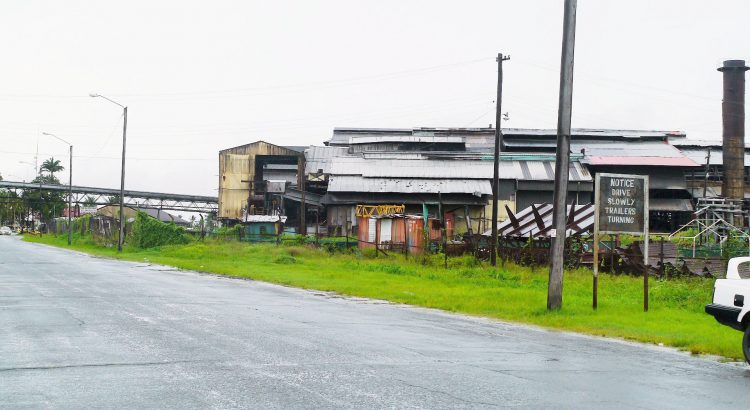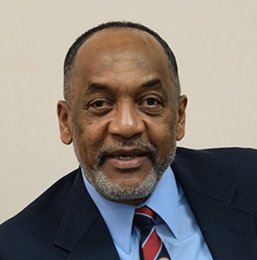While he supports gas from Exxon’s wells being brought onshore for domestic use, former Director of the Environmental Protection Agency (EPA), Dr Vincent Adams says that a rigid Environmental Impact Assessment (EIA) must be undertaken and he called on the public to “actively participate” when it is initiated.
“For a project of that magnitude, an EIA must be done…has to be done. Absolutely! There is no going around that. It’s not only about the pipeline but also the onshore operations to refine and distribute the gas which pose high risk to the air, water and soil, and must be mitigated in the plan,” Adams told Stabroek News in a telephone interview from the United States.
“A seismic activity study of the area must be done as part of the EIA to fully understand the risk of seismic activities such as earthquakes, ocean floor mudslides, and volcanoes, which could rupture the pipeline and cause an ecological disaster and threat to the fishing industry,” he added.

Adams, whose services as head of the EPA were terminated in November last year by the current government, said that the agency has a critical role in both the oversight of research on the project and if it is approved, to monitor for environmental hazards that can pose a grave risk to this country’s marine life.
Adams said that Guyana’s citizenry must understand that they have an active role to play in lobbying, that all documents on the project be made public and they must participate during the environmental impact assessment.
“It is not rocket science so citizens should not be afraid. They should begin reading up on gas-to- shore projects and what is required for that to happen and possible impacts to the environment along with mitigating measures,” he said.
“Do not get me wrong, I fully support the gas-to-shore once the cost analysis proves feasible to taxpayers and there is no harm to the environment or safety is compromised. Guyanese deserve cleaner energy than what is used. My first choice is always renewables, as I have in the past stressed, but this is what we have until the transformation of our economy for the better,” he added.
Through Vice President Bharrat Jagdeo, the government late last month announced that the proposed site for the project, which President Irfaan Ali expects to be completed by 2023, would be the former Wales, West Bank Demerara estate.
“We have now settled on the location which is Wales Estate,” Jagdeo had told Stabroek News as he explained that “the critical decisions regarding the geotechnical, geophysical and the environmental studies, that will advance the project, have been made.”
The studies and opinions underpinning the selection of Wales for the project have not been released by the PPP/C government.
Former President of the Georgetown Chamber of Commerce and Industry, businessman Clinton Urling has said that the project has transformational potential but that he believes that the current government should release the studies or information that helped it form its decision.
“The upside of the gas to shore project has transformational potential, for both our public/private enterprises and our citizenry, and is one that should be pursued despite premature and nonsensical grumblings from so called `experts’”, he wrote in a letter to this newspaper to reject that view that the scheme would bankrupt the country.
He wrote again to urge government to release the documents on its findings for the public’s analysis.
Prudent
“Since that revelation, many commentaries have appeared concerning the feasibility of the gas-to-shore project and most recently criticisms on the suitability of the proposed location. Since the Vice President enumerated that all the relevant studies have been conducted at arriving at the location, it would be prudent for the government to publicly release those assessments so as to calm any fears members … the populace might have on this important and costly project,” Urling stated.
The Transparency Institute of Guyana Inc. (TIGI) has also called for the documents to be released, in the interest of transparency and good governance. “Let the PPP/C government release the studies and opinions underpinning the selection of Wales for the project, and not do like the APNU/AFC and GECOM in not releasing their SOPs of the last election. None of us is privy to savvy. That is why the best option is open governance and more open governance,” Alfred Bhulai of TIGI wrote in a letter to this newspaper.
Adams said that because the project has a number of risks to the environment, documents should be made public.
Explaining that the bringing of gas to shore would mean the laying of pipes along the offshore seabed and inland, Adams said that careful planning would have to go into where it runs to minimize the risk of ships hitting it, as was done to the Guyana Power and Light’s underground cables.
“You cannot escape that there will be release of that gas into the marine environment. It will happen. What you have to do is to ensure that you are prepared; that when those pipes are laid, all effort goes into mitigation of environmental risks. The pipes are not going to last forever so you have to know what oversight and maintenance regimes would be in place. You must have your own experts to supervise the process,” he said.
“The logistical layout to where it feeds would have to be assessed. Underwater ecosystems are at risk with a project like this, if it is not executed properly. Trawlers or generally ocean and marine vessels’ anchors could damage those pipes and above they would not even recognize that. It is not something where they would smell or see a bubble on the water top. Then too, ExxonMobil prides itself as having one of the best safety standards in the world but you have to also ensure that you hold them accountable every single step of the way and put measures and penalties for breaches. Our people need to ask questions. Ask lots of questions. The fisher folk have to be an active part of the discussions because their industry is at highest risk,” he added.
With the gas that has to be used being associated gas, Adams explained that it will have to go through processing before it could be used and during that transformation there are also risks. “What is coming up is not raw not gas but associated gas or a mixture of gases. So that would have to be purified and processed or separated,” he explained.
“Because of the significant environmental risks that this pipeline will pose … it appears obvious that EEPGL (Exxon’s subsidiary) will be required to develop an environmental impact assessment to provide details of the project, identify the risks and mitigative actions to be in place to ensure safe and environmentally sound construction and operation of the project. They must,” he stressed.






